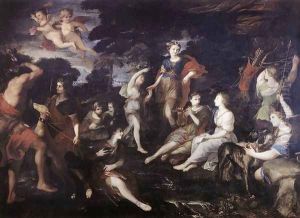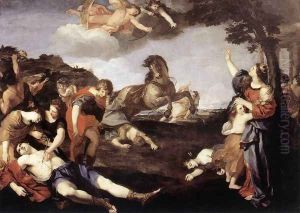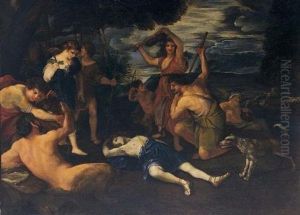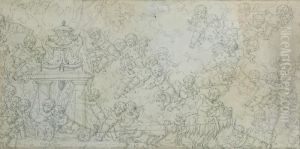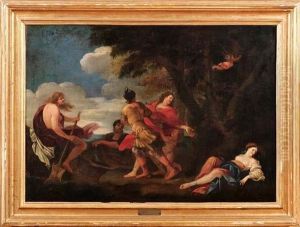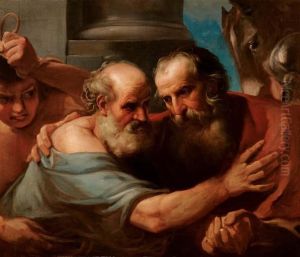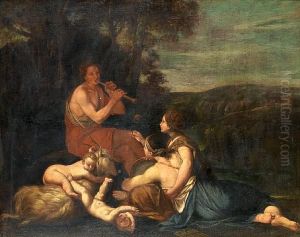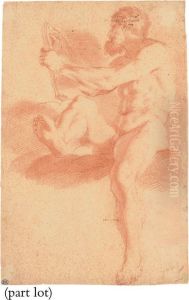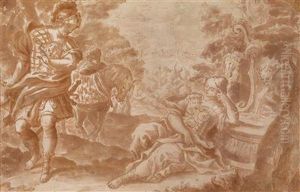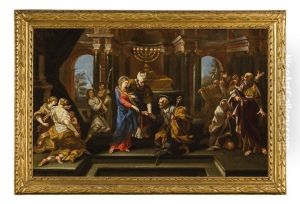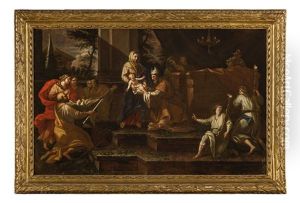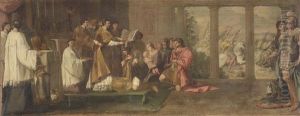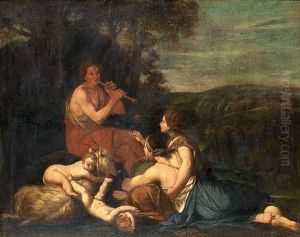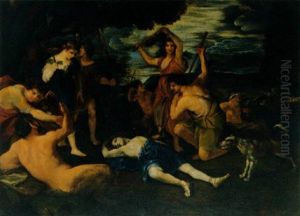Andrea Camassei Paintings
Andrea Camassei was an Italian Baroque painter and engraver, born in 1602 in Bevagna, near Perugia, in the Umbria region of Italy. He is considered part of the Roman School of painting, having spent a significant portion of his career in Rome. Camassei's early life and training are not thoroughly documented, but it is known that he moved to Rome at a young age, where he became involved in the vibrant artistic community of the time.
In Rome, Camassei was influenced by the works of Caravaggio and the Bolognese painters, which is evident in his use of dramatic lighting and keen observation of physical and emotional detail. He quickly gained patronage from important figures, including the Barberini family, one of the most influential families in Rome, who were significant patrons of the arts. His works for the Barberini included decorations for their palaces and contributions to the Basilica of Santa Maria Maggiore.
One of Camassei's most notable works is 'The Massacre of the Innocents,' which showcases his ability to convey intense emotion and drama, a hallmark of Baroque art. He was also known for his landscapes and historical paintings, which often featured classical and biblical themes, rendered with a meticulous attention to detail and a rich palette.
Despite his contributions to the Roman art scene and his influence among contemporaries, Andrea Camassei's work was somewhat overshadowed by more prominent figures of his time, such as Gian Lorenzo Bernini and Pietro da Cortona. However, his paintings remain significant examples of the Baroque style, characterized by their emotional depth and visual complexity.
Camassei's career was relatively short; he died in 1649 at the age of 47. Today, his works can be found in various museums and collections, offering insight into the intricacies of Baroque painting and the artistic ferment of early 17th-century Rome. His legacy, though not as widely recognized as some of his contemporaries, contributes to the broader understanding of Baroque artistic endeavors and the cultural milieu of his time.
